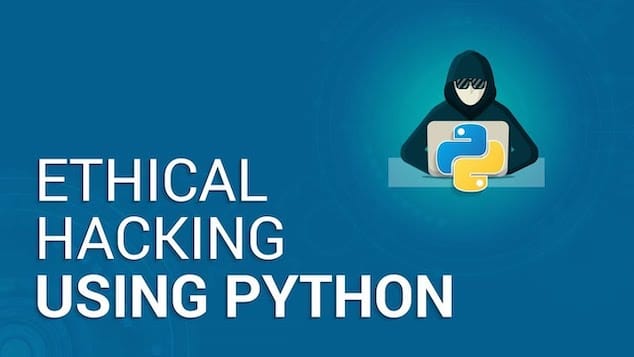
What do you know about ethical hacking and cybersecurity? This informative article will introduce you to using the Python language for carrying out these tasks.
Python for Ethical Hacking: Leveraging Python for Cybersecurity and Penetration Testing
Many programming languages have effective use in the cybersecurity field, yet ethical hackers lean towards Python. There’s a reason for this, of course. The language offers simplicity, versatility, and flexibility, three significant features to navigate the web of security assessments. It is a great tool for security because of its extensive libraries and robust capabilities that would make your already tricky job easier as an ethical hacker or a white hat.
Cybersecurity has become essential in every industry, from B2B to gaming. You’ll even find it implemented in the safety measures that protect you while you use your 8 euro no deposit bonus at GGbet Casino. However, there is a question of how the coveted security is achieved in the first place. Let’s take a precise look at Python, which offers cybersecurity experts great functionality. Here’s a crash course on using this programming language for penetration testing and strengthening networks.
Essential Libraries and Tools
There are a number of tools and libraries you would need to get comfortable with if you want to master Python in your cybersecurity journey, so it is the issue we’ll begin with. You’ll need these techniques to identify vulnerabilities and threats, run penetration testing, and develop secure client systems. Don’t get it twisted, and don’t let anyone fool you. Each of these tools is essential, having different uses. Once you master them, you’ll be able to move to the next step, which involves building your unique toolkit.
We’ll go over some prominent ones, and then you can get your hands dirty researching others to grasp the techniques behind them:
-
- Scapy: This powerful manipulation library would help you scan the network and sniff packets and fingerprints. Once you master it, you’ll be able to analyze traffic on the network, craft and send custom packets, and detect vulnerabilities to secure the network;
- Nmap and Metasploit: Write scripts to automate Nmap scans, collect and analyze scan results, and pinpoint possible entry points for attackers. You’ll get better port scanning and reconnaissance with this network scanning tool. The tools in the Metasploit framework are also perfect for penetration testing, exploit development, and controlled attacks for assessing vulnerability;
- ReportLab and Jinja2: Use this language to audit security on systems, applications, and networks, automate repetitive tasks, and generate comprehensive reports to help you communicate better with your stakeholders. You’ll have to develop scripts, of course, and then you’ll be able to identify any vulnerabilities in the system, configure weaknesses, and locate gaps in the system’s security;
- Cryptography: The Python cryptography library offers multiple functions for password hashing, encryption, and secure communication. With libraries like Hashlib and John the Ripper, you can complete password security tasks and analyze cryptographic systems;
- Requests and Beautiful Soup: These libraries are mostly used in web application penetration testing. White hats can simulate web application attacks with these tools and carry out tasks to identify vulnerabilities like:
- Input validation testing;
- Web scraping;
- SQL injection;
- Parsing HTML content.
With added functionality from Flask and Django frameworks, they’ll be able to build custom hacking scripts to extract information and identify potential weaknesses.
Training and Resources for White Hats
Learning any skill online is difficult, no matter what anyone says. Surely, it comes easier to others, but even then, it requires going the extra mile. If you are looking to understand the nitty-gritty of Python in relation to cybersecurity and penetration testing, then this chat we’ve had wouldn’t be sufficient. You’ll need more resources, and we can help! Here are some that will come in handy whether you are a visual or auditory learner.
- Python for Ethical Hacking (Mindsmapped);
- The Complete Python for Hacking and Cybersecurity Bundle (StationX);
- Ethical Hacking (CyberTraining 365);
- Developing Ethical Hacking Tools (Cybrary);
- Network Programming | Network Apps & Hacking Tools and Python3 for Offensive PenTest: A Complete Practical Course (Udemy).
Best Practices
Ethical hacking is not child’s play, and just as the name implies, you must be on your best behavior ethically and responsibly when carrying out these tasks. Before you jump into the fray or the thrill of rummaging through someone’s defenses, seek permission and get proper authorization. You should always uphold ethical and legal guidelines, no matter how tempting it can be to break them.
Some companies require certifications like Offensive Security Certified Professional (OSCP) and Certified Ethical Hacker (CEH) to ensure you have the skills and right mindset to disclose vulnerabilities responsibly.
The Future of Cybersecurity
Nothing comes easy, and you’re already miles ahead if you are taking the time to find and understand how to leverage this language for your challenges. Cybersecurity is here to stay, and trust us when we say you’ve discovered a mine that will explode in the coming years. Hone your skills by mastering the art behind these tools. Yes, it’s an art too! Build your unique toolkit and practice! Soon, you’ll be in the business of going on the security offense with Python.





